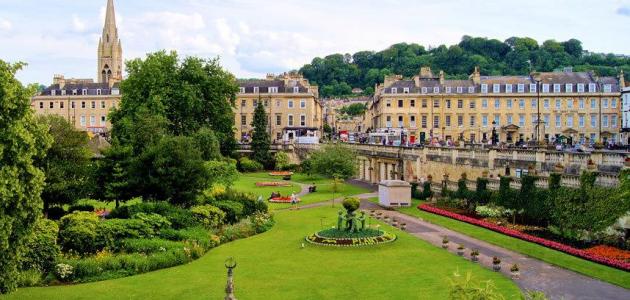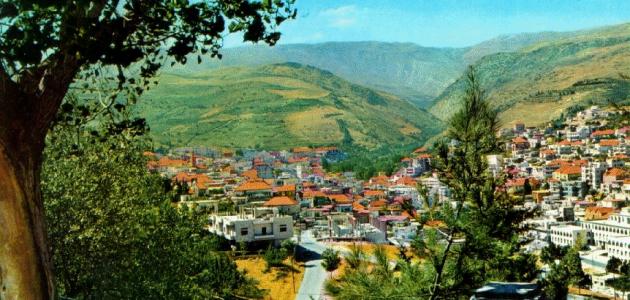Table of Contents
Pharaonic civilization
The ancient Egyptian Pharaonic civilization grew in northeastern Africa, before 4000 years BC, where the beginning was when people residing in the Sahara North Africa suffered drought in 8000 BC, which prompted them to move to another place, so they chose to reside around a river area The Nile; because it had abundant water, fertile soil, and it is worth noting that the Pharaonic civilization lasted for 3000 years, as the population began to increase, and began to form a societal structure, an active civilization, and the most important achievements of this civilization: the agricultural revolution, hieroglyphic writing Building cities and villages That includes houses made of clay and bricks, in addition to being surrounded by walls. The Egyptian civilization was ruled by kings called the Pharaoh, as they expanded the areas of their influence, and interest in building huge monuments, such as many temples, and the pyramids that have existed for thousands of years until this day. .
The most important Egyptian pharaonic monuments
Giza Pyramids
Archaeological pyramids are huge pyramid tombs that were built 4000 years ago for the Pharaohs who believed that when the king dies a part of his soul remains in his body, and this spirit was called (Ka); and therefore they embalmed the body of the pharaoh, and put golden vessels and food items with him, And furniture, as a picture of caring for this remaining part of the soul, and Imhotep is considered the first to start with the idea of pyramid tombs in the form of terraces, as construction of the pyramids continued from the beginning of the era of the old state, and until the end of the Ptolemaic era in the fourth century AD, and the most famous of these pyramids are:
- Djoser’s Pyramid: As it is the first pyramid that was built in Saqqara, during the time of King Djoser, in the year 2630 BC, it is a pyramid made of 6 layers of stone, with a height of up to 62 AD, and the pyramid was surrounded by a complex of courtyards, temples, and shrines.
- The pyramid of Khufu: It is the largest pyramid in the Giza region, built for the pharaoh Khufu, who ruled the area for a period of 23 years, and the height of the pyramid is 147 m, and the average base is 230 m, and is located next to the Great Pyramid 3 small pyramids, belonging to the wives of King Khufu, surrounded by a group of terraces, as tombs for relatives , And king’s officials.
- Khafre Pyramid: The pyramid was built by Ibn Khufu, which is Khafra, where it is considered the second largest pyramid in Giza, and the most important characteristic of this pyramid is the presence of the Great Sphinx at the pyramid complex; it is a limestone sculpted statue built as a guard of the pyramid, as it is shaped like a man’s head, And the body of a lion.
- Menkaure Pyramid: The pyramid is located in the southern part of Giza, and was built by Ibn Khafra, called Menkaure, which is the third pyramid in length, knowing that the pyramids after it are now taking a smaller size.
Karnak Temples
Qena Governorate, in Upper Egypt, is considered a UNESCO World Heritage site, because it contains a number of temples, including: the Monto Temple north of the city of Karnak, which today is only ruins that contain the foundations of the building, and this temple was built during the time of Amenhotep the Third, including also the Temple of Ptah On the north side, which Hatshepsut built, and Thutmose III, and other temples, and the most important temples in Karnak are the Temple of Amun Ra, which is considered one of the largest temples in the world, and the largest in Egypt, where this temple was built to constitute an urban temple for the state god, and it is Includes the following:
- Horoscopes: There are 10 towers, distributed between courts and halls, and these towers formed a series of gates with angles to the main axis.
- Hall of columns This temple is characterized by the pillar hall, which is considered one of the wonders of antiquity, as it covers an area of 5000 square meters.
- Central plate: The roof of the courtyard rises 24 meters, and it is raised on 12 huge pillars, and the roof panels are above the level of the rest, so that light and air can enter through a rocky layer.
- Corridors: The temple includes 7 baptized corridors on both sides, reaching 134 columns.
Hatshepsut Temple
The Pharaonic Queen Hatshepsut built a funeral temple for her in Deir el-Bahari in 1479 BC, and the temple consists of 3 levels, and I encountered a row of columns, reliefs, paintings, and statues, and what distinguishes this temple is the presence of a large sloping stone corridor, linking the level yard The first and the second level, and another sloping passageway connecting the second level to the third, and upon entering the first level through the intentional passages, the visitor finds small inner sloping passages that take him to the second level, and in the yard of the second level there is the tomb of Sinemoot.
Luxor temple
The Luxor Temple was built during the time of Amenhotep the Third, and Tutankhamun completed it, and Ramses II added some elements to it, and it is located on the eastern bank of the Nile River, in the city of Thebes in Upper Egypt, and the temple consists of the following:
- the yard: It is a large hall with columns, surrounded by its three sides, a double row of beautiful columns, and Ramses II added an external hall surrounded by a double row of columns surrounded by huge statues.
- Entrance: The initial design of the entrance was surrounded by towers at the northern end, but it was changed, and the impressive colonnade of 14 columns, 16 m high.
- Central plate: The central courtyard of the temple can be reached via a corridor surrounded by two walls on both sides.
- the gate: It is a huge portal with scenes of festivals, wars during the time of Ramses II, and in front of it huge statues of the Pharaohs, and two obelisks, one of which is still standing.
Temple of Horus
The Temple of Horus is located in Edfu, located 60 km north of Aswan, and its construction dates back to the year 237 BC, during the reign of Ptolemy III, where the construction of the temple, its additions, and its inscriptions continued for 180 years. The temple consists of the following elements:
- the gate: It is one of the most important gates in Egypt, with a height of 37 meters, and decorated with inscriptions of soldiers in battles.
- the yard: The courtyard was ancient for the common people, and it is open and raised on columns with floral heads on three sides.
- Colise halls: At the entrance, a visitor receives two statues in the form of a falcon, then he enters the open hall of a rectangular shape, its ceiling raised on 12 columns, and then he enters into a closed hall, its ceiling raised from the right on 12 columns, but north of it has two chambers: one of them is for your lines As a store.
- Corridors: They are two vestibles: one is exterior, its walls are decorated with inscriptions of the gods and kings, and it is called (the sacrifice hall), and the other is the inner vestibule, called (the rest of the deities).
- The chapel: The chapel contains a granite niche in gray, and outside the chapel, there are 12 rooms surrounding it, the walls of which bear many religious inscriptions, some of which were used as a storehouse, and others for worship.
Pharaonic monuments in the Museum of Egypt
The Egyptian Antiquities Museum in Cairo includes the largest collection of ancient Egyptian antiquities in the world, as the number of antiquities in it is 120 thousand, some of which are on display, while others are stored under accurate environmental conditions;
- The effects of Tutankhamun’s tomb: The tomb of King (Tutankhamun) was discovered in 1922 AD by Howard Carter, and today the museum houses the mummified corpse of Tutankhamun, and more than 3500 antiques, such as jewelry, vases, utensils, weapons, and the golden face mask which is a universal symbol of ancient Egyptian civilization, It is made of solid material, and weighs up to 11 kg.
- Statues and sculptures: Pharaohs carved many statues and artifacts, as many of them that have been found from the remains of temples, and ancient monasteries, are displayed in the museum.
- Jewelry: The museum contains a large collection of jewelry that are considered the best in the world, and these jewelry give a picture of what people wore thousands of years ago, and among these jewelry are two beautiful bracelets of gold, recovered from the tomb of Tutankhamen.
- The mummy: In the museum there is a room called (the Royal Mummy Room), where there were 27 mummies, but today there are fewer than 11 mummies, the most recent of which is the mummy of Hatshepsut.
The importance of the Egyptian pharaonic monuments
The ancient Pharaonic relics inform us about the cultural, religious, and social life in the past, as it is a rich source for understanding the Pharaonic civilization, and these effects have given inspiration to artists, writers, poets, and architects from the Romen era to the present day, and many archaeological areas have been recorded in Egypt The world heritage of UNESCO, and these pharaonic monuments attract tourists to Egypt from everywhere in the world, so that the number of visitors annually reaches about 15 million visitors. In 2015, Egypt ranked 83 as the best tourist destination in the world, as the tourism sector in Egypt is one of They are the economic resources of the state; it contributes to approximately 11% of the gross domestic product (GDP), and works in the Egyptian tourism sector more than 10% of the total workforce.








